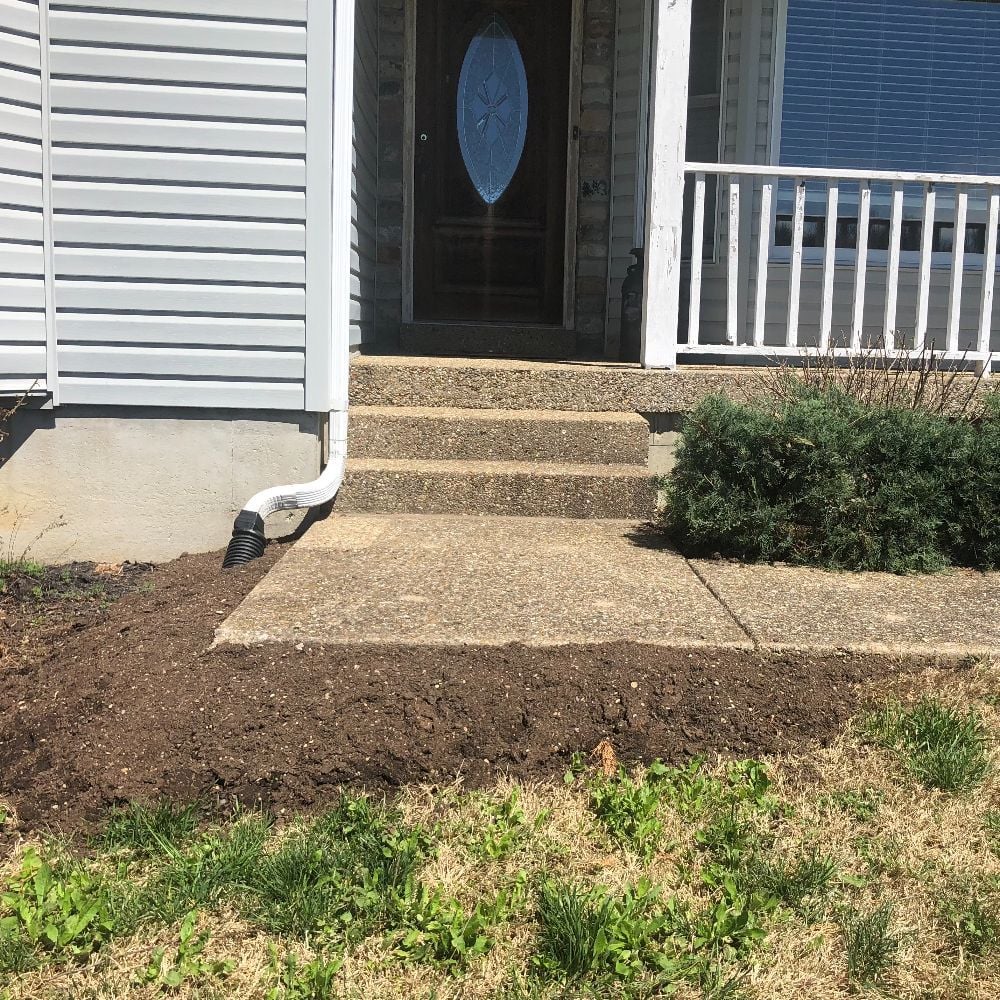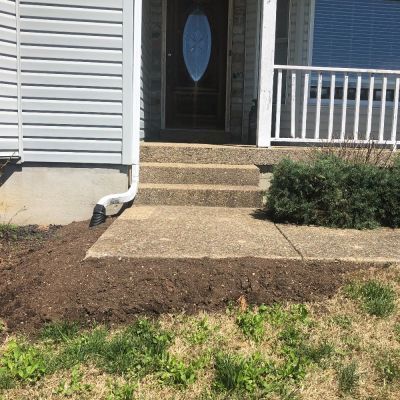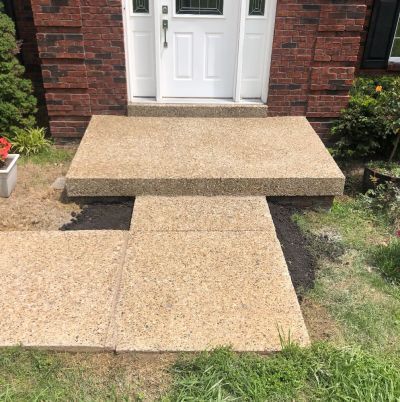8 Common Questions You Most Likely Have About Concrete Step Leveling
February 22nd, 2023 | 3 min. read
By Sarah Etler

Learn the answers to some of the most commonly asked questions about lifting your settled steps with concrete leveling.
In the world of concrete repair and maintenance, there are endless amounts of products, terms, processes, solutions, materials, finishes… the list goes on. And if you’re not an industry insider, it can be easy to get a little lost among all this jargon and methodology.
Concrete leveling, or concrete lifting, is no exception to this rule. Within this subcategory of concrete repair and maintenance, there’s an entire world full of new questions to be asked, processes to be learned, and methods to consider.
This includes concrete step lifting – the process of drilling small holes in settled concrete steps, pumping a leveling compound through the holes, and slowly lifting the steps back into a safe, level position.
Here at A-1 Concrete Leveling, we know how frustrating it can be to explore an option to repair your concrete and come out just as confused as before. That’s why we’ve made it our priority to provide you with all the information and resources you need to make an informed decision on everything from step lifting to concrete cleaning, and all things in between.
In this article, you’ll find the answers to some of the most frequently asked questions related to concrete step leveling so you can become more familiar with whether or not it’s a method of repair you’d like to see come to life in your home.
1. To lift concrete steps, do you have to drill through the step?
Yes, in order to lift concrete steps into a level position, we first need to drill strategic holes through the step. Then, we can pump our leveling compound through the step to fill any voids underneath the concrete and slowly bring the step back up to the correct position.
Here at A-1, we patch these drill holes with a non-shrink grout and try to match it as closely as possible to the color of the concrete step.
2. Do you have to lift the sidewalk in addition to the concrete steps?
When lifting concrete steps, we sometimes have to lift the adjoining concrete slabs, like sidewalks or porches, as well. It depends on whether these slabs are settled, too.
If we only lift the steps and not the surrounding concrete slabs, it may make the bottom step too tall. It may also leave trip hazards or an improper grade. Whether or not we have to level more than the concrete steps depends on the characteristics of each individual repair.
3. Will leveling my concrete steps damage my handrail?
If the handrail was in place before the concrete steps settled, it has either already broken due to the settling, or can withstand the lift. If the handrail was put in place after the steps settled, it will likely need to be removed before the stairs are leveled.
4. What happens to the crack at the bottom/top of my steps?
Once the stairs are back in place, we’ll caulk the gap at the top or bottom of your steps.
5. Do the voids underneath the steps get filled?
Yes, when lifting concrete steps, the voids beneath the steps get filled.
A lot of times steps can have a void underneath before they even begin to settle, so being proactive and taking care of it ahead of time can help prevent the settling from happening. However, we will still have to drill through the step.
6. Will leveling my concrete steps affect my landscaping or yard?
Most of the time step leveling will not impact landscaping or yards, but if there’s a chance this may not be the case, your estimator will discuss it with you.
Related: Does Concrete Leveling Harm Trees or Landscaping?
7. Do I need to bring up the soil level once the steps are leveled?
We recommend bringing up soil levels and adding the mulch or stones of your choice around the area.


8. How long does concrete step lifting take?
Most concrete step leveling repairs are completed within 1 day, you can use the steps the following day. We recommend waiting 24 hours for all materials to cure.
Related: How Long Does Concrete Leveling Take?
Is Concrete Step Leveling Right For You?
For most people, the idea of concrete step lifting is relatively new, and this naturally comes with plenty of question marks and uncertainties.
However, after learning about the answers to some of the most common questions homeowners have about concrete step lifting, you’re ahead of the curve and one step closer to deciding if it’s a repair method that may be right for your home.
Over the last 30 years here at A-1 Concrete Leveling, we’ve lifted countless sets of concrete steps and restored them to the safe, great-looking state that all homeowners desire.
If you’re interested in seeing what concrete step lifting can do for your home, click the link below to request a free onsite estimate with a member of the A-1 team!
Want to know more about concrete leveling and concrete step lifting? Check out these related topics from Concrete Academy:
Sarah Etler joined A-1 Concrete Leveling after receiving her Bachelor of Arts degree in English from Northern Kentucky University. As A-1's Content Marketing Manager, she works closely with industry experts to produce content that will best answer questions related to concrete repair and maintenance practices. Sarah loves living a life full of discovery and is excited every day to see what new things she can learn and share with those around her.